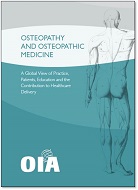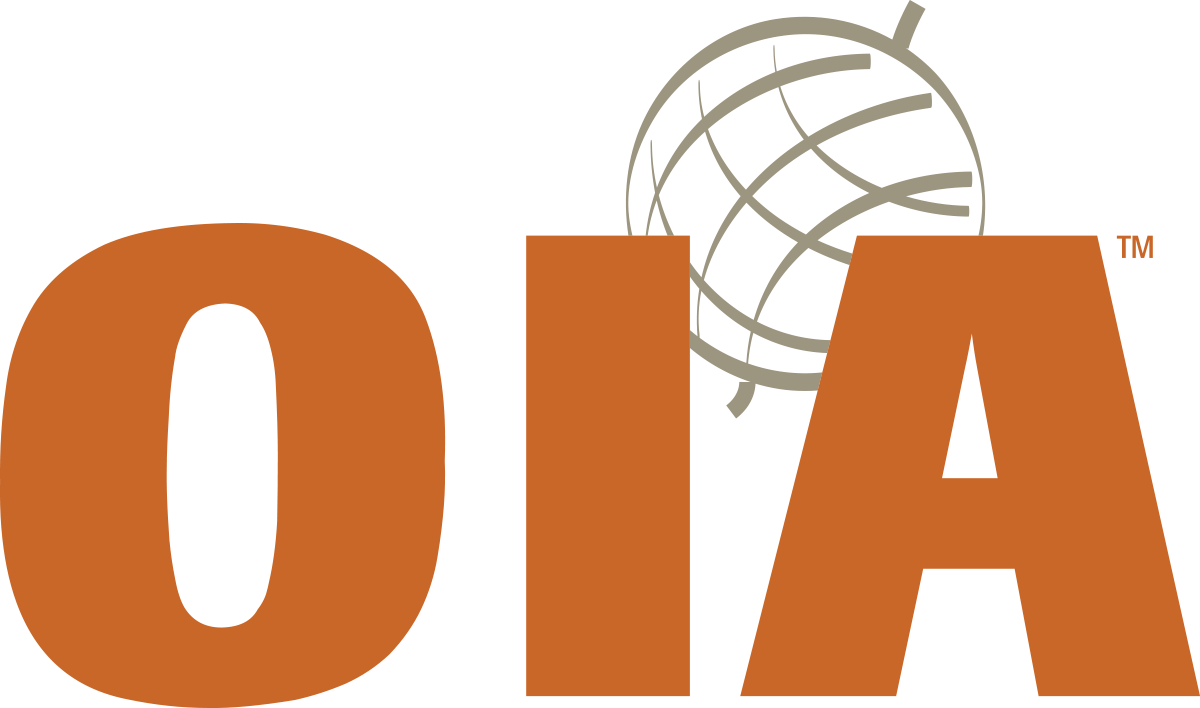Osteopathy and Osteopathic Medicine: A Global View of Practice, Patients, Education and the Contribution to Healthcare Delivery (2013)

|
Osteopathy and Osteopathic Medicine Book (PDF) Download |
Osteopathy and Osteopathic Medicine Summary Flier (PDF) Download |
The OIA Board of Directors is proud to offer The OIA Global Report, Osteopathy and Osteopathic Medicine: A Global View of Practice, Patients, Education and the Contribution to Healthcare Delivery.
In 2010, OIA members at our San Francisco Annual Conference requested this report as a way to augment the existing World Health Organization Benchmarks for Training in Osteopathy. At a meeting at our 2012 conference in Paris, World Health Organization representatives worked with OIA board members to make recommendations on documenting the growing significance of osteopathic healthcare worldwide. The OIA then carried out a large survey of current osteopathic practice: a global “snapshot” of patients, plus a survey of osteopathic organizations and practitioners in more than 30 countries. They then also built upon a document called the “History and Current Context of the Osteopathic Profession” (PDF) that the OIA published in March 2012 to develop a report that describes the current state of the osteopathic profession globally.
The report is presented in four parts:
- The opening chapter charts how the two different types of practitioners – osteopaths and osteopathic physicians – emerged.
- The chapter on practitioners and patients discusses the 87,000 osteopathic physicians and 43,000 osteopaths in over fifty countries. It also identifies the growth of these distinct practitioners, and highlights patient demographics, health complaints, and treatment modalities.
- The chapter on models of education and training describes the increasing depth and breadth of educational and training models for osteopaths and for osteopathic physicians. The chapter also explores current and emerging regulatory and recognition models around the world.
- The final chapter explores the evidence for the efficacy, safety, and cost-effectiveness of osteopathic healthcare and osteopathic manipulative treatment, including available evidence on treatment outcomes.
Details of curricula, core competencies, and practice standards are included in the Annexes linked below.
OIA Global Report Usage & Promotion
The document can be used to explain osteopathy and osteopathic medicine to those unfamiliar with them, including health and governmental authorities. The OIA has developed a list of audiences whom OIA members can contact about the Global Reports:
- UN member nation health ministers
- National, state and local health ministers or authorities, including opposition leaders
- National, regional and local newspapers, especially health reporters
- TV and radio programs, especially health and current affairs programs
- Any national or regional health initiatives in their country
- Other healthcare professionals, including other doctors (e.g., medical doctors, allopathic physicians), nurses, midwives, physical therapists, chiropractors, etc.
- Local prospective patients, in education centers, evening classes or parent information sessions
- Students or graduating health professionals at universities
In addition, individual practitioners are encouraged to mention the report in their clinic newsletter, with links. The report can also be linked in media releases during International Osteopathic Healthcare Week.
Download our press release for use when sharing the report.
Annexes
Annex 1: Introduction
Annex 2: Purpose of the OIA Status Report
Annex 3: What is Osteopathy/Osteopathic Medicine?
Annex 4: Osteopathic Competencies and Capabilities
- Australia: Code of Conduct | Capabilities
- Europe: EROP | FORE
- New Zealand
- United Kingdom: Standard 2000 | Practice Standards
- United States
Annex 5: Current Statutory Systems Governing the Practice of Osteopathy
- Australia Legislation | CPD
- Canada
- New Zealand
- United States: Medical Boards | CME
- Finland | Practice Rights
- France: Décret n° 2007-435 du 25 mars 2007 relatif aux actes et aux conditions d’exercice de l’ostéopathie
- Iceland
- Malta
- Switzerland
- United Kingdom: Legislation | Standards | Code of Practice | CPD
- Europe
Annex 6: Educational Models Currently in Use in Osteopathic Education
- United Kingdom
- United States: General academic model | Colleges of Osteopathic Medicine
- Europe
Annex 7: Current Accreditation Models
Annex 8: Patient Safety
- Bone and Joint Decade
- See H315-A/04 Osteopathic Manipulative Treatment (OMT) of the Cervical Spine | United Kingdom
